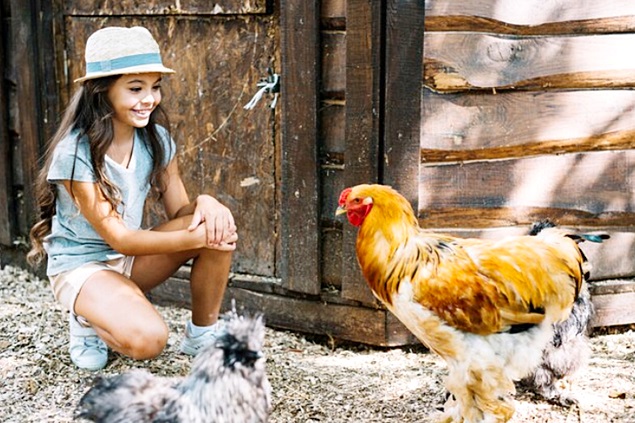1981

According to the latest market analysis conducted by the European Commission, per capita meat consumption in the EU is expected to decrease by 1.5% in 2023 due to inflationary price trends and reduced market supply.
Overview
Beef production in the EU is anticipated to further decline by -3.1% in 2023, primarily due to structural adjustments in the beef and dairy sector and low margins. Imports into the EU might decrease due to reduced production in the United Kingdom, while South America does not fully compensate for the import losses from the UK.
EU exports continue to grapple with high domestic prices. African swine fever (ASF) and a smaller breeding herd push EU pork production further down by 6.6% in 2023, despite lower feed prices.
Supported domestic demand and lower demand from China slow down EU exports by 16% in 2023. EU poultry production could see a rebound of 3.3% in 2023 as it is one of the more affordable animal proteins. However, high poultry prices in the EU make exports less competitive.
Brazil, Ukraine, and Thailand are sending substantial volumes to the EU (+12%), while the UK experiences a massive decline. The historical decline in EU sheep numbers has led to a -1.8% reduction in slaughter in 2023. Sustained demand and high domestic prices favor increased imports from New Zealand and the UK (+15% in 2023).
Beef
EU beef production experienced a decline of -4.5% in the first half of 2023, mainly due to a significant drop in slaughter in Italy (-23%). Subpar grazing conditions in some parts of the EU due to dry weather, along with relatively high feed prices (though decreasing), contributed to this lower beef supply. This reduced beef supply continues to support EU beef producer prices. By the end of the year, beef production is expected to recover slightly due to lower feed prices and increased carcass weights.
Some additional on-farm feed deficit-related slaughtering is expected in some EU countries. Overall, a production reduction of -3.1% is projected in 2023 on an annual basis. If feed prices continue to decrease, making the fattening process more profitable, a smaller reduction of -1% is expected in 2024, closer to the structural declining trend observed in previous years.
Despite high prices in the EU, imports do not cover the loss in EU production. Therefore, per capita beef consumption in the EU is expected to decrease to just under 10 kg (-3.5%) in 2023. Additionally, the current high inflation reduces consumer purchases or pushes consumers towards cheaper animal proteins. In 2024, a smaller decrease of -1% is anticipated.
Pork
In the first half of 2023, EU pork production decreased by -8.6%. The largest reductions were recorded in Germany (-210,000 t or -9.4%), Denmark (-180,000 t or -21.5%), and Spain (-150,000 t or -5.8%).
This reduced EU supply leads to record high internal prices. However, from July, EU production prices started showing signs of decline. As feed prices decrease and margins remain positive, carcass weights are expected to increase in the second half of the year. Overall, a production decrease of -6.6% is expected in 2023.
Meanwhile, EU demand remains firm, but given the reduced supply, a decrease in EU per capita consumption is projected (-5%, to 30.4 kg). In addition to the reduced supply, consumer considerations regarding price increases play a significant role, leading to a reduction in pork consumption or a shift to other types of meat.
Particularly, pork consumption is often reduced in favor of poultry. If supply returns slightly and this increased availability could further ease producer prices, a small increase in per capita consumption might occur in 2024 in response to this.
Poultry
Despite outbreaks of Highly Pathogenic Avian Influenza (HPAI), but with lower intensity compared to 2022, EU poultry production continues its rapid recovery. In the first half of 2023, EU slaughters increased by 3.1%.
This is mainly due to increases in Italy (+15% or 87,000 t) and Spain (+5.5% or 45,000 t). Broiler placements increased by 1.2% in the first half of 2023 year-on-year. By the end of 2023, production is revised upward to 3.3%, considering a (continued) reduction in feed and energy costs and improved margins.
A smaller increase of 1.2% is projected in 2024 if price competition from other meats is higher. Similar incidence of HPAI is assumed as in this year. EU production prices are already over 2,500 EUR/ton since over a year. From June-July 2023, a slight downward movement is visible, but prices are still at record levels. However, poultry remains one of the cheapest sources of animal protein for consumers.
Sheep and Goat Meat
The growth in EU sheep and goat production in spring, driven by prior scheduling of traditional religious holidays, was surpassed by subsequent negative developments, leading to a decrease in slaughter in most member states in the first half of 2023.
A structural decrease in sheep numbers, lower grass availability, especially in Mediterranean countries, higher feeding costs, and outbreaks of ovine variola in Spain and recently in Bulgaria, are expected to impact EU sheep meat production. Due to high prices for goat milk, the sector is going through an animal retention phase.
Overall, a reduction of -1.8% in sheep and goat production is expected in 2023, followed by a smaller reduction in 2024 (-1%).
Being the most expensive type of meat, EU sheep meat consumption is susceptible to inflationary pressures like other red meats, but, comparatively, it may be best favored by its specific positioning in consumer baskets (religious and cultural holidays). Therefore, per capita EU consumption is expected to remain fairly stable (+0.8%).




